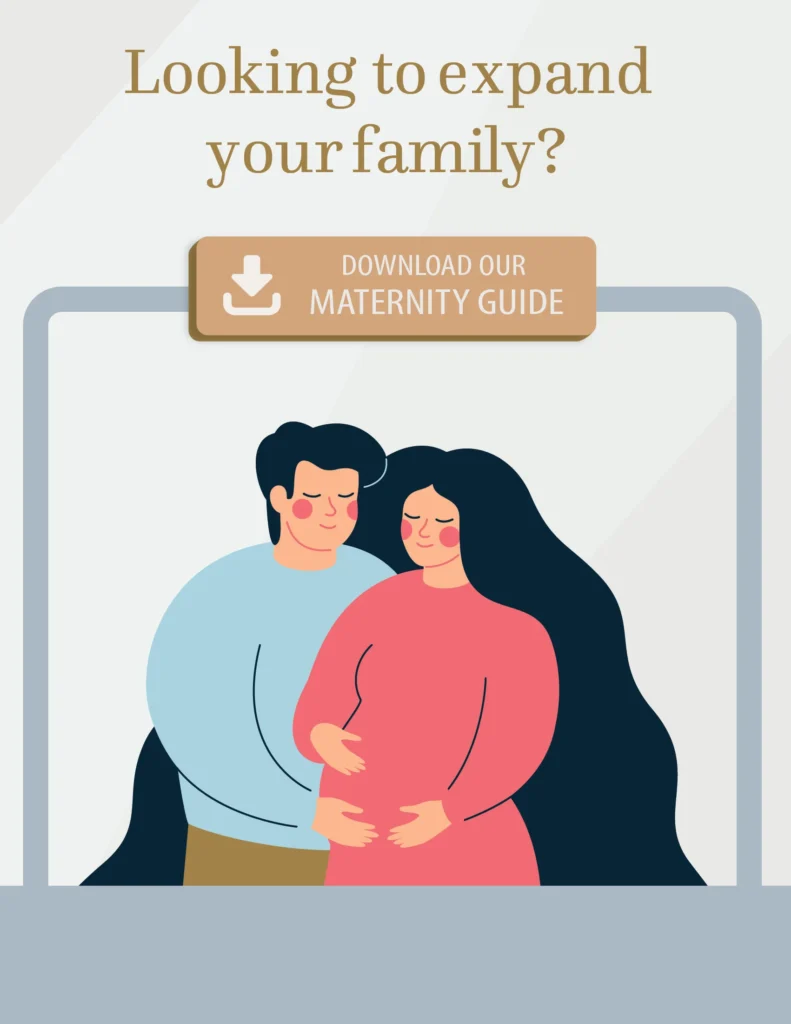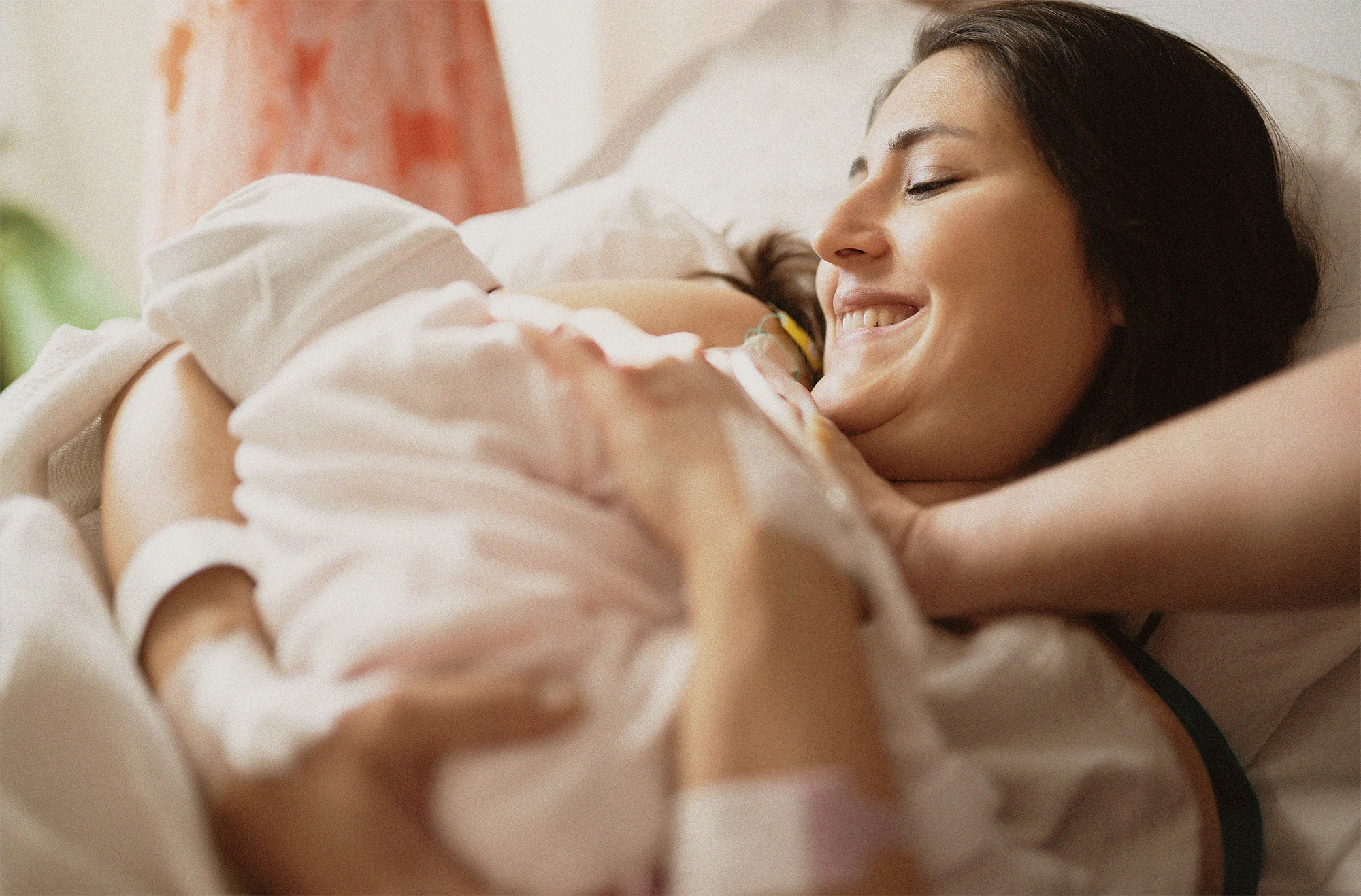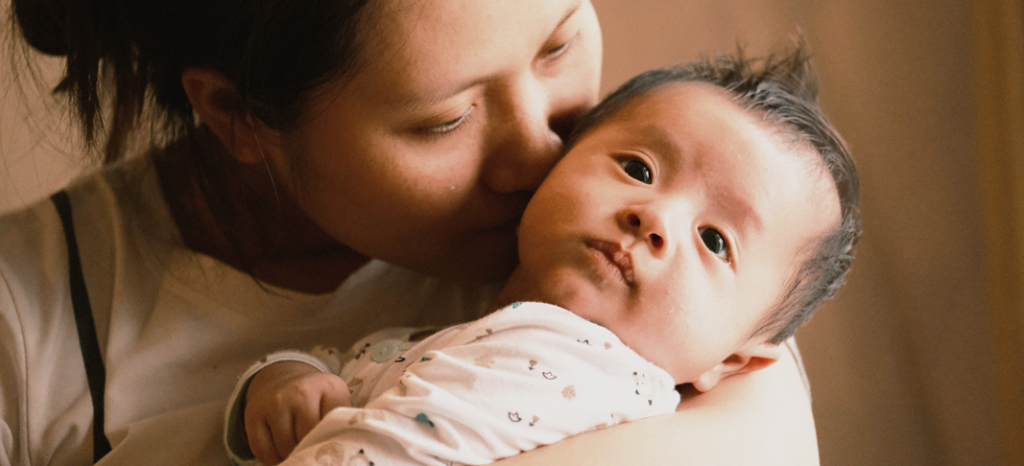“New baby” and “rest” aren’t the most synonymous words for a new mother, but the first few days of postpartum recovery after having your baby should be a time for rest and recuperation. While you have an infant who needs constant care, you also need to care for yourself.
Your body will experience a number of changes following birth. Here’s an overview of the physical changes occurring after birth and guidance on how to manage postpartum recovery.
Vaginal discharge
Vaginal discharge—or lochia—is the tissue and blood that lined your uterus during pregnancy. It’s heavy with blood clots for the first few days but will gradually become lighter in flow and color until it goes away after a few weeks. You may notice increased lochia when you get up in the morning when you’re physically active, or while breastfeeding. A mom who has a cesarean section will also have lochia but less than a mom who has a vaginal delivery.
Episiotomies and perineal tears
Your vagina and your perineum (the area between your vagina and rectum) will feel very tender and sore from the strain of childbirth. If you gave birth vaginally, it’ll probably take you a few weeks to heal, especially if you had an episiotomy or a perineal tear. If you gave birth by cesarean section after attempting to push, you’re also very likely to be sore.
To keep your perineum clean, fill a peri bottle (given to you in the hospital or purchasable online) with warm water and squirt the water over the area between your vagina and rectum in a front-to-back motion each time you use the bathroom or change your sanitary pad. Pat the area dry with toilet tissue—don’t rub. To maintain good hygiene and cleanliness, change your pad frequently. Continue to practice this perineal care for at least one week after delivery.
Uterine contraction
Mild contractions after birth help reduce bleeding and shrink your uterus back to its pre-baby size. You may notice these contractions more if you breastfeed. This is because breastfeeding causes your body to release oxytocin, a hormone that causes uterine contractions.
To relieve discomfort, you can try a heating pad or take anti-inflammatory pain medication (ibuprofen) as recommended by your healthcare provider.
Breast engorgement
Around the third or fourth day after giving birth, your breasts may become engorged and feel firm, swollen, and sore as they start filling with milk. The initial tightness and soreness will eventually wear off whether you choose to breastfeed or not.
- When breastfeeding, you can prevent engorgement by frequently feeding your baby. You may experience a tender, heavy feeling if a feeding is a little overdue.
- If you are bottle-feeding your baby, you can relieve the discomfort of engorgement by applying ice packs to your breasts, wearing a supportive bra, and by taking an anti-inflammatory pain medication (ibuprofen) to reduce swelling.
Sore nipples
Blood flow to your nipples increases the first few days after giving birth, making them particularly sensitive. If you choose to breastfeed, it’s common to experience some pain as your baby learns how to properly latch on to your breast. A little discomfort as baby gets into a rhythm is normal but feeling constant pain throughout the feeding is not. If you experience constant pain, ask for help from a nurse or lactation consultant.
While you have an infant that needs constant care, you also need to care for yourself.
Night sweats
Due to changing hormones, increased perspiration is common after delivery—especially at night. Drink plenty of water and try to stay cool. Night sweats should go away in a couple of weeks as your body adjusts to the new hormone levels.
Constipation relief
The first bowel movement after delivery may be delayed to the third or fourth day after delivery. Your healthcare provider may prescribe or recommend an over-the-counter stool softener to soften the stool and make bowel movements less uncomfortable.
If you prefer natural stool softeners, there are plenty of foods that soften stool quickly. Here are some natural laxatives:
- High-fiber foods
- Leafy greens
- Chia seeds
- Flax seeds
- Water
Irregular menstruation
If you’re breastfeeding, you may not get your period until after your baby weans. Please be aware that although you may not get your period while breastfeeding, you can still get pregnant. If you’re bottle-feeding, your menstruation will resume around 6 to 12 weeks after delivery. The first few periods after delivery may be irregular.
C-section recovery
The postpartum recovery process after a c-section tends to be a bit longer than after a vaginal birth. You’ll likely stay in the hospital for an extra day, and you’ll have certain restrictions on bending and lifting. You may also be prescribed pain medication to take for one to two weeks after delivery.
Before you go home, you’ll get detailed instructions about how to care for your incision and promote healing. Your incision should be healed around six weeks after giving birth.
Postpartum depression or emotional distress
After childbirth, you may feel sad and overwhelmed for several days. Changing hormones, anxiety about caring for your baby, and lack of sleep all affect your emotions.
Be patient with yourself. These feelings are normal and usually go away.
If sadness lasts more than two weeks, talk to your doctor or midwife. Don’t wait until your postpartum visit to do so. You may have a serious but treatable condition called postpartum depression. Postpartum depression can happen any time within the first year after birth, and it usually lasts around 3 to 6 months, but you can lesson the affects of it with therapy and/or medication.
Contact us
Don’t be afraid to ask for help. While you focus on caring for your baby, remember that you provide your best care when you first care for yourself.
If you have any question about postpartum recovery, call CHM’s Maternity Support Team at 1-800-791-6225 for medical and program-related support.

CHM Maternity Guide
When you’re thinking about starting a family, considering all your options is a great first step.
Learn more about CHM’s maternity program and make sure you’re prepared by signing up to receive the Maternity Guide.




